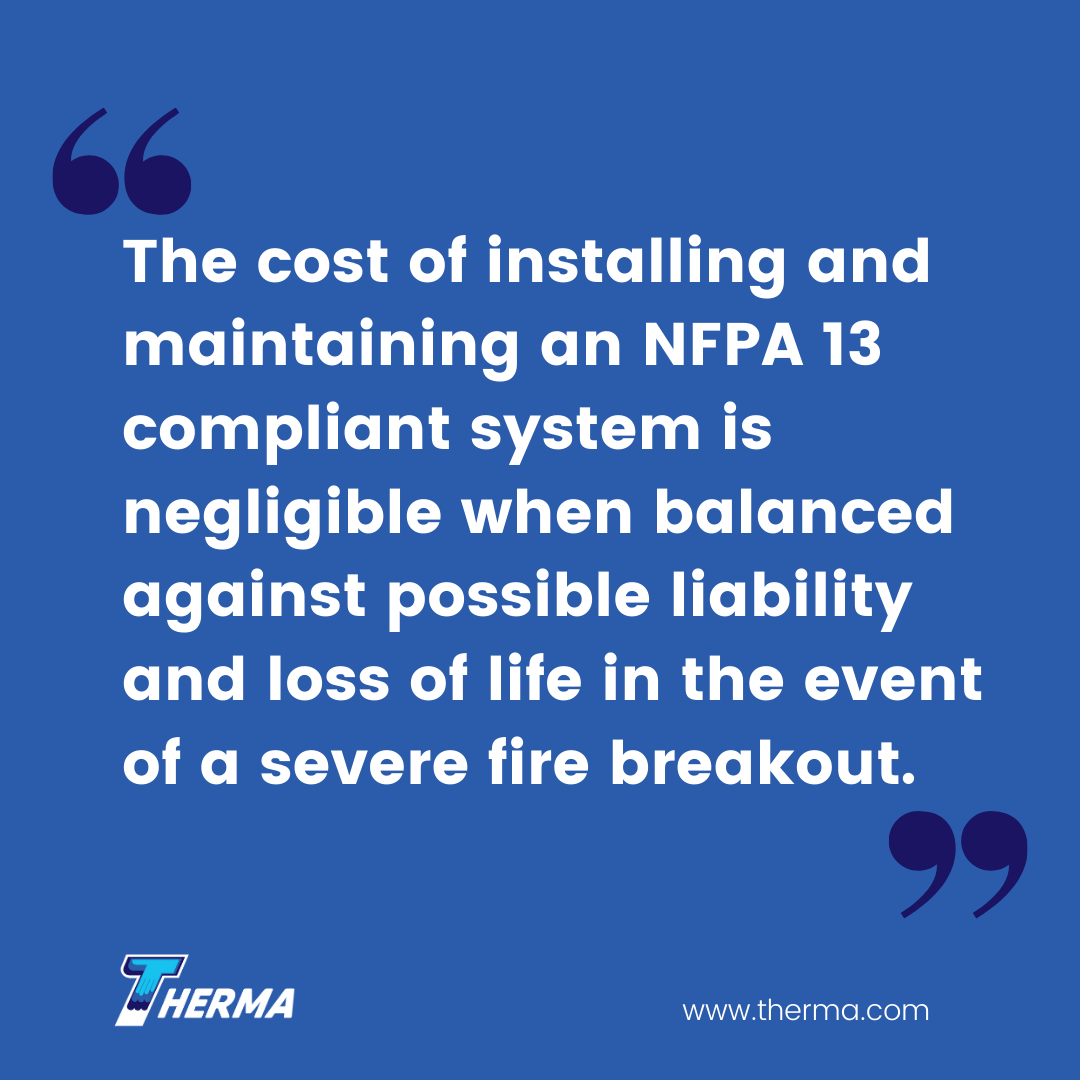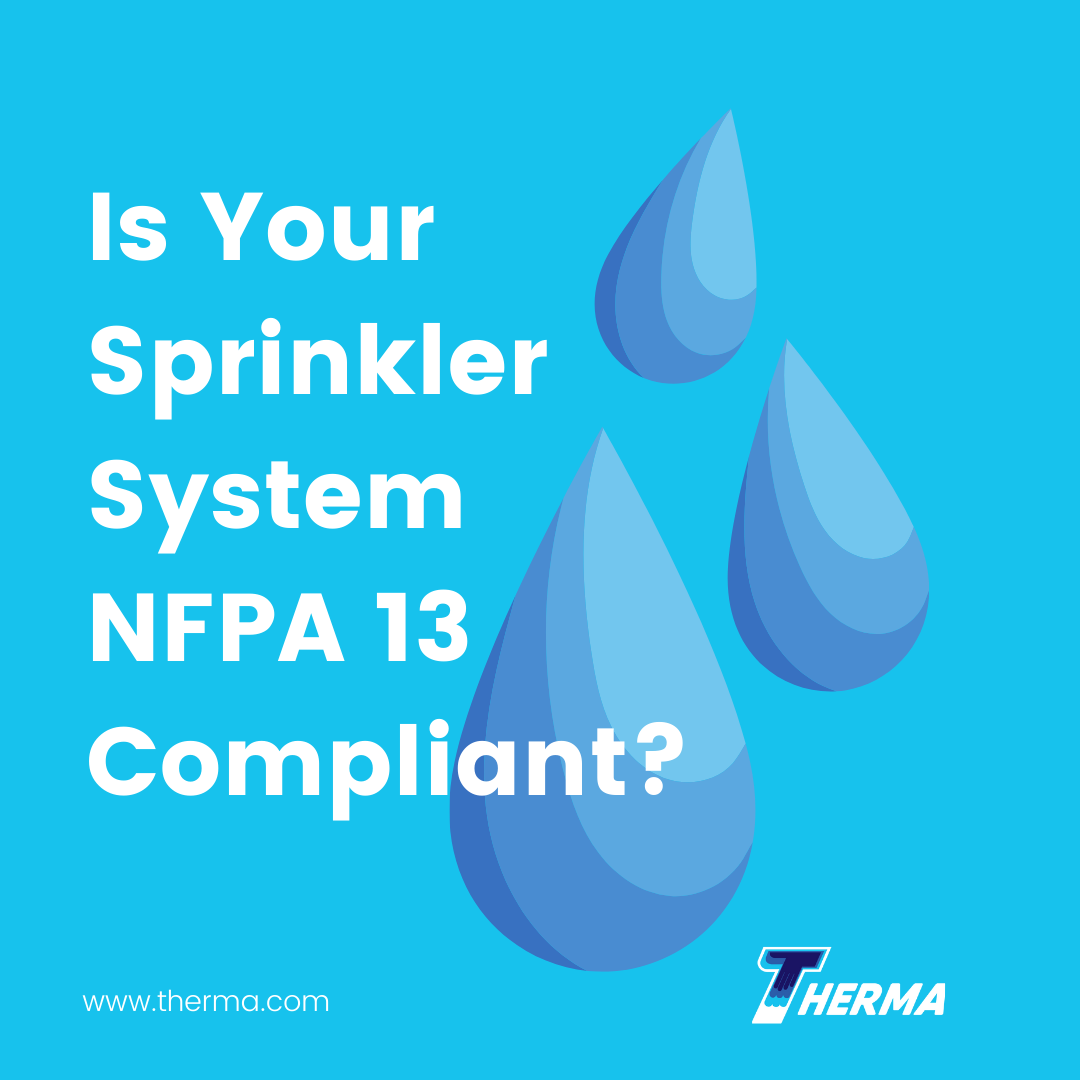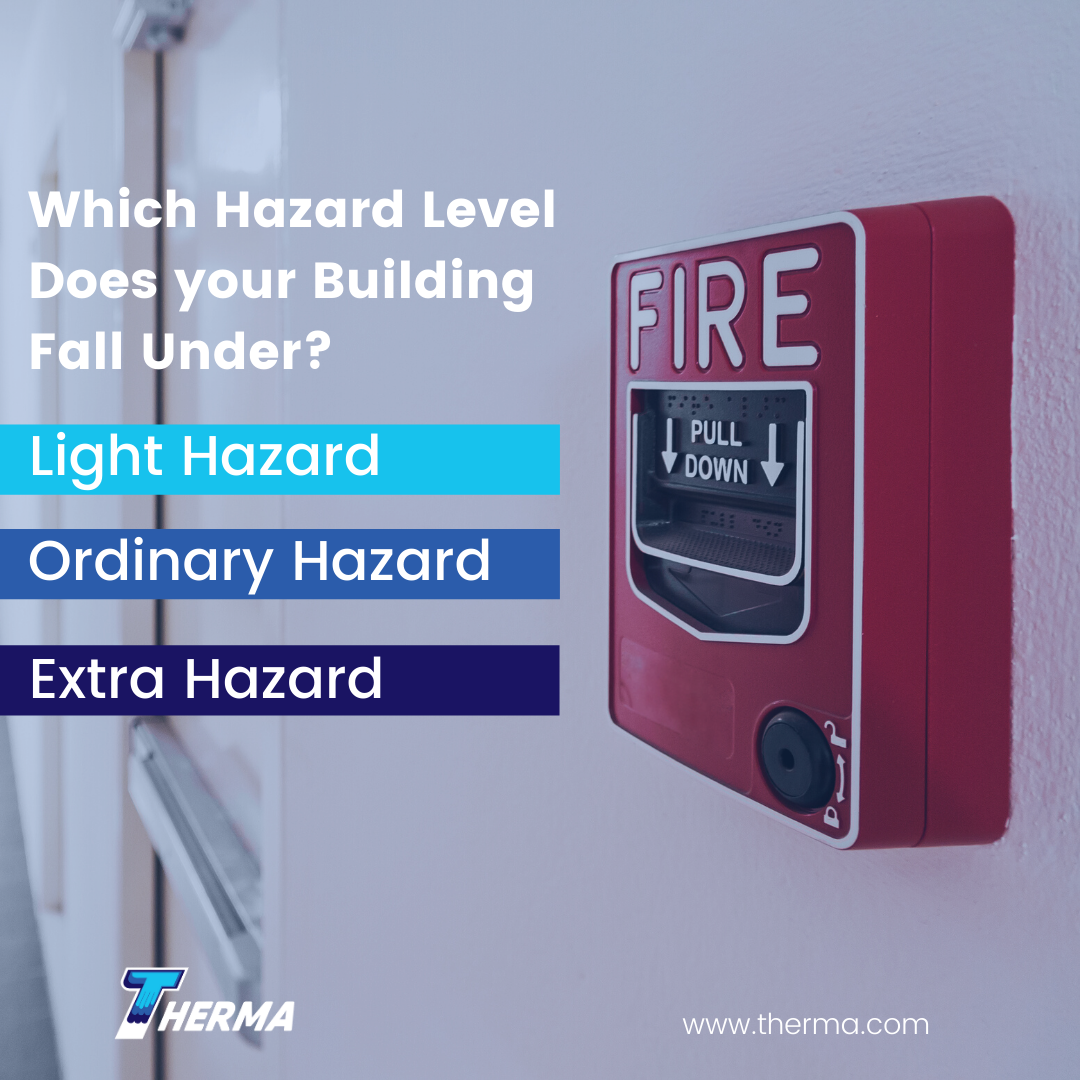Every commercial building should be outfitted with fire protection systems, including smoke detectors, extinguishers, alarms and sprinklers, according to local codes. Sprinkler systems specifically should comply with the National Fire Protection Association’s NFPA 13, which is the industry standard on all matters related to sprinkler systems within the United States.
The first version of the NFPA 13 was published in 1896. Today’s version is close to 500 pages and may be supplemented by requirements from state and municipal authorities. Installation of sprinkler systems is tightly regulated to ensure quality control and compliance.
General NFPA 13 Definitions and Requirements
The entire third chapter of NFPA 13 is dedicated to defining key terms, the most important of which is its definition of an automatic sprinkler, described as: “a fire suppression or control device that operates automatically when its heat-activated element is heated to its thermal rating or above, allowing water to discharge over a specified area.”
When it comes to requirements, a top priority is the mandate related to buildings that have sprinklers: if a building has sprinklers, the entire building must be covered, unless a specific area is explicitly exempted in the standards. Occupancy comprises another significant portion of NFPA 13 documentation, which classifies occupancy standards (based on fire sprinkler systems only) by hazard level.
Hazard Levels for Determining Occupancy Ratings
Light Hazard
Light hazard buildings feature contents with a low combustibility and would be expected to have low heat release from a fire. Light hazard buildings fall into a single group.
Ordinary Hazard
Ordinary hazard buildings are categorized into two groups:
- Group 1 buildings display low overall combustibility but encompass a moderate amount of combustible materials. However, no stockpile can be taller than 8 feet, and the building would be expected to have low heat release from a fire.
- Group 2 buildings display a moderate to high level of both combustibility and content. However, contents expected to release moderate heat should not be stacked taller than 12 feet, while stockpiles of contents with a high heat release should not exceed a height of 8 feet.
Extra Hazard
Extra hazard buildings are also categorized into two groups:
- Group 1 buildings display very high combustibility and content amounts, plus added risks from compounds such as dust or lint, which can accelerate a fire. The rate of heat release from a fire would be high, but there are either no combustible and flammable liquids or only a minimal amount present.
- Group 2 buildings display very high combustibility, compounded by storage of moderate to large amounts of flammable or combustible liquids, even if there is ample shielding of combustibles.
Materials stored, known as “commodities,” are also assigned levels by NFPA 13: Class I is considered least vulnerable to fire, and Class IV is the most susceptible, with determinations made based on both the materials being stockpiled and methods of stacking and storing.
Fire Sprinkler System Components and Installation
NFPA 13 provides specific descriptions of all components used in automatic sprinkler systems, including detailed requirements for their correct installation and a listing of all mechanical support requirements.
Piping may be wet, dry, permanently filled with water or temporarily filled with gas. Pipes may be triggered to fill with water by an alarm signal with individual heads activated individually, or all sprinkler heads may activate simultaneously in a “deluge.”
Multi-cycle activation may be integrated, and sprinkler piping may be connected to circulating, closed-loop systems used for heating or cooling. Antifreeze may also be combined with water in part of the system, and the piping may be accessed separately or in tandem with the building’s main water piping.
Installation requirements are rigorous and require assistance from licensed professionals. Incorrect installation can lead to system failure and/or penalties, including fines from state and municipal authorities. Once installed, building automation systems can help monitor for any issues.
The Basics of Fire Sprinklers
Sprinklers are an integral part of any fire protection system.
Two significant factors should be considered when planning and executing a fire protection plan: temperature ratings and K-factors.
Temperature Ratings
Automatic sprinkler heads have different temperature ratings that allow them to be triggered when the air temperature reaches a certain level. In some areas, a head with too low of a rating can cause sprinklers to go off if extreme temperature highs are reached inside a building. Too high of a temperature rating can mean the sprinkler heads trigger too late, after a material with low-temperature combustibility ignites, and the fire begins to rage. Other factors that can affect temperature rating choices include ceiling height and ventilation.
K-Factors
The flow rate through a commercial fire sprinkler system is an equation based on the sum of flow rates through individual sprinklers. Each flow rate depends on water pressure. Dimensions of the sprinkler opening and frictional losses in the sprinkler line all play into a sprinkler head’s K-factor, which is one way to determine its efficiency as well as the overall area it can cover.
Every commercial building should have sprinklers as part of a comprehensive fire protection system, even if the building is exempt for a particular reason. The cost of installing and maintaining an NFPA 13 compliant system is negligible when balanced against possible liability and loss of life in the event of a severe fire breakout. Fire protection systems should always be part of your building’s process systems and controls.










